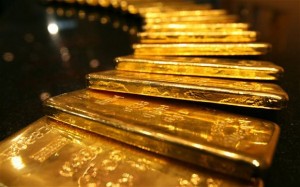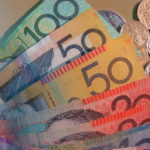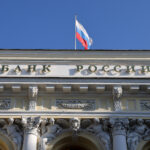 Gold traders are most bullish since the start of the bear market two months ago, supported by weaker dollar and retreat from a five-year high in equities.
Gold traders are most bullish since the start of the bear market two months ago, supported by weaker dollar and retreat from a five-year high in equities.
On the Comex division of the New York Mercantile Exchange, gold futures for August delivery traded at $1 409.95 a troy ounce at 7:52 GMT, marking a 0,41% decrease for the day.
Gold gained 1.2% on Thursday following a wide retread by the dollar against all its counterparts. Today the precious metal stands lower amid expectations of U.S. labour data, due at 12:30 GMT. Nevertheless, on Monday gold traded below the psychological barrier of $1 400 and at current levels marks a third week of gains. The short-term direction of the yellow metal will most probably depend on the U.S. data.
Gold lost around 16% of its value this year and is 26% lower than the September 2011 all-time record high of $1 921.15 a troy ounce.
Mark O’Byrne, the executive director of Dublin-based GoldCore Ltd. said for Bloomberg: “The concern is that we see stock markets come under pressure and then see an increase in risk aversion. Gold’s already had a correction, so people see value in the gold market. There has been significant technical damage done to gold and therefore it will take a period of time to recover.”
On Thursday, Initial Jobless Claims mismatched expectations by a little and fell to 346 000 for the week ending June 2, down from 357 000 the preceding week, but still 1 000 more than the 345 000 decrease expectation. This further pushed the dollar down, increasing prices of dollar-priced commodities.
Investors are now looking into the Change in Non-Farm Payrolls, Average Hourly Earnings and the Unemployment Rate indicators, due at 12:30 GMT, which will shed some light on the health of the U.S. economy, thus dampening or sharpening expectations about Fed’s monetary stimulus program.
News from India in the last two days supported gold prices. The world’s biggest gold consumer will widen curbs on imports, which intends to counter the countrys record current account deficit. The Asian nation raised its duty on gold to 8%, up from 6%, as the current account gap surged to $32.6 billion. India, like many other countries was lured by the low gold prices, which fell to $1 321.95 on April 16. The country gold imports reached 162 tons last month, up from 142 in April. Restrictions should reduce that amount to 50-100 tons in June.
Russia and Kazakhstan have also been diversifying assets by buying gold after prices contracted with a record pace. The two countries have kept buying gold for a seventh straight month. Turkey is also on the list of countries, which have expanded their gold reserves. The nation’s holdings increased by 18.2 tons to 427.1 tons in April, a tenth straight month rise. Belarus’s reserves increased for a seventh month and Azerbaijan’s and Greece’s gained for a fourth month in a row.





